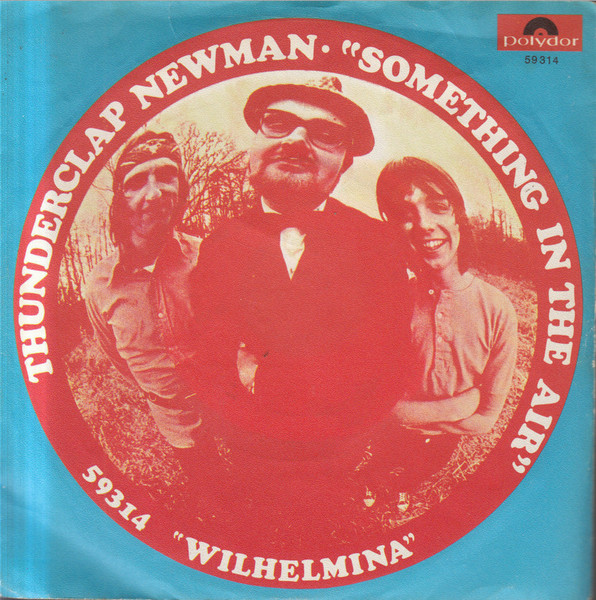Thunderclap Newman: Something In The Air
[purchase]
I suggested this theme during a summer thunderstorm, but when I started brainstorming ideas for a post, the band Thunderclap Newman jumped into my brain and wouldn’t leave, so there are no (other) storm references here.
Like most people, I bet, I could name exactly one song by Thunderclap Newman, the wonderful “Something In The Air,” but no others. I’ve mentioned before the “classic rock radio” syndrome (although I’ve never called it that), where bands are remembered only for a handful of songs—or even in this case, for one song—and the rest of their discography gets forgotten. I’m sure you have your favorites, and I’ve even used “Something In The Air” as an example in an earlier post. I also knew that Pete Townshend produced their album, and that he played on it, under a pseudonym, although I didn’t know what that was (Bijou Drains). But that’s pretty much it.
The band was assembled by Townshend in 1969 as a vehicle to support the songwriting and other talents of John “Speedy” Keen, who wrote “Something In The Air.” It was an unlikely crew: Keen, who had been a friend of Townshend's and a driver for the Who, had written “Armenia City in the Sky,” the opening track on The Who Sell Out. Townsend enlisted Andrew “Thunderclap” Newman, a postal worker and piano player, and 15-year-old guitarist Jimmy “No Nickname” McCulloch. They met at Townshend’s home studio, and the four recorded a single, with Townshend producing.
It was a big hit in England, was in a couple of movie soundtracks, and was a minor success in the US, initially. Followup singles were less popular, but the success of “Something” led to the band having to do live performances, augmented by a drummer and bass player who was not Pete Townshend. The band’s album, Hollywood Dream, was released in 1970, to excellent reviews, but only modest sales. After some more touring, the band broke up in the spring of 1971. As Wikipedia noted, “The members of the band had little in common. In a 1972 NME interview, Newman said that he got on with Keen's music but not with Keen personally, while the exact opposite was true with regard to McCulloch.”
Apparently, Hollywood Dreams is now considered a forgotten classic, with Allmusic stating, “So many bands have been hauled out of obscurity to be tagged the greatest secret you've never been told. Thunderclap Newman are one of the few who actually deserve that epithet.” I admit to only sampling a few tracks, and I have trouble getting past Keen’s reedy voice and the excessive music hall influences, but maybe it takes a few solid listens before the genius is revealed. And that’s why I’ve perpetuated the “classic rock radio syndrome” here, focusing on the one song we all know.
McCullough went on to play with John Mayall, Stone the Crows, and, most famously, Wings, but died from heroin-induced cardiac arrest in 1979 at the age of 26. Keen’s solo career went nowhere, and became a producer, helming Johnny Thunders and the Heartbreakers’ debut, L.A.M.F. and Motõrhead’s first album (and appears on one of that band’s live albums) and was a session musician before leaving the music industry. Keen died of a heart attack in 2002 at the age of 56.
Newman recorded an unsuccessful solo album and was a studio musician before retiring until 2002, when he formed the Thunderclap Newman Band, which toured until it disbanded in 2010. Newman formed a new band (which included Pete Townshend’s nephew Josh and the former drummer of Big Country), billed simply as Thunderclap Newman. In 2010 this group released an album, Beyond Hollywood, and toured from 2010-2012, with their last gig at the Isle of Wight Festival. Newman died in 2016 at the age of 73.
And I’ve made you wait to the end to know why Andy Newman was known as “Thunderclap”—it was a nickname he received in school because of his playing technique.































































































































































































































































































































































































0 comments:
Post a Comment